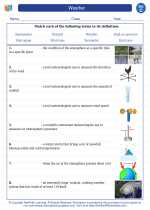Comparative Anatomy
Comparative anatomy is the study of similarities and differences in the anatomy of different species. It involves comparing the structures of different organisms to gain insight into their evolutionary relationships and adaptations to their environments.
Key Concepts
- Homologous Structures: These are similar structures found in different species that have a common evolutionary origin. For example, the bones in the limbs of vertebrates are homologous structures.
- Analogous Structures: These are structures that have similar functions in different species, but different evolutionary origins. For example, the wings of birds and insects are analogous structures.
- Vestigial Structures: These are remnants of structures that were functional in ancestral species but are no longer functional in the organism possessing them. For example, the human appendix is considered a vestigial structure.
- Embryology: Comparative anatomy also involves the study of embryonic development to identify similarities in the early stages of different organisms, providing evidence for evolutionary relationships.
Importance of Comparative Anatomy
Comparative anatomy is important because it provides evidence for the theory of evolution and helps scientists understand the relationships between different species. It also aids in the study of adaptations and the diversity of life on Earth.
Study Guide
Here are some key points to focus on when studying comparative anatomy:
- Understand the concepts of homologous, analogous, and vestigial structures and be able to identify examples of each.
- Learn about the major anatomical similarities and differences between different groups of organisms, such as vertebrates, invertebrates, and plants.
- Explore the role of comparative anatomy in understanding evolutionary relationships and adaptations.
- Study the embryological evidence for evolution and the similarities in early developmental stages among different organisms.
- Practice identifying and interpreting comparative anatomy diagrams and illustrations.
By mastering these concepts and topics, you will develop a strong understanding of comparative anatomy and its significance in the field of biology.
[Comparative Anatomy] Related Worksheets and Study Guides:
.◂Science Worksheets and Study Guides Third Grade. Weather
Study Guide Weather
Weather  Worksheet/Answer key
Worksheet/Answer key Weather
Weather  Worksheet/Answer key
Worksheet/Answer key Weather
Weather  Worksheet/Answer key
Worksheet/Answer key Weather
Weather  Vocabulary/Answer key
Vocabulary/Answer key Weather
Weather  Vocabulary/Answer key
Vocabulary/Answer key Weather
Weather 

 Worksheet/Answer key
Worksheet/Answer key
 Worksheet/Answer key
Worksheet/Answer key
 Worksheet/Answer key
Worksheet/Answer key
 Vocabulary/Answer key
Vocabulary/Answer key
 Vocabulary/Answer key
Vocabulary/Answer key

The resources above cover the following skills:
EARTH AND SPACE SCIENCE (NGSS)
Earth’s Systems
Students who demonstrate understanding can:
Represent data in tables and graphical displays to describe typical weather conditions expected during a particular season.